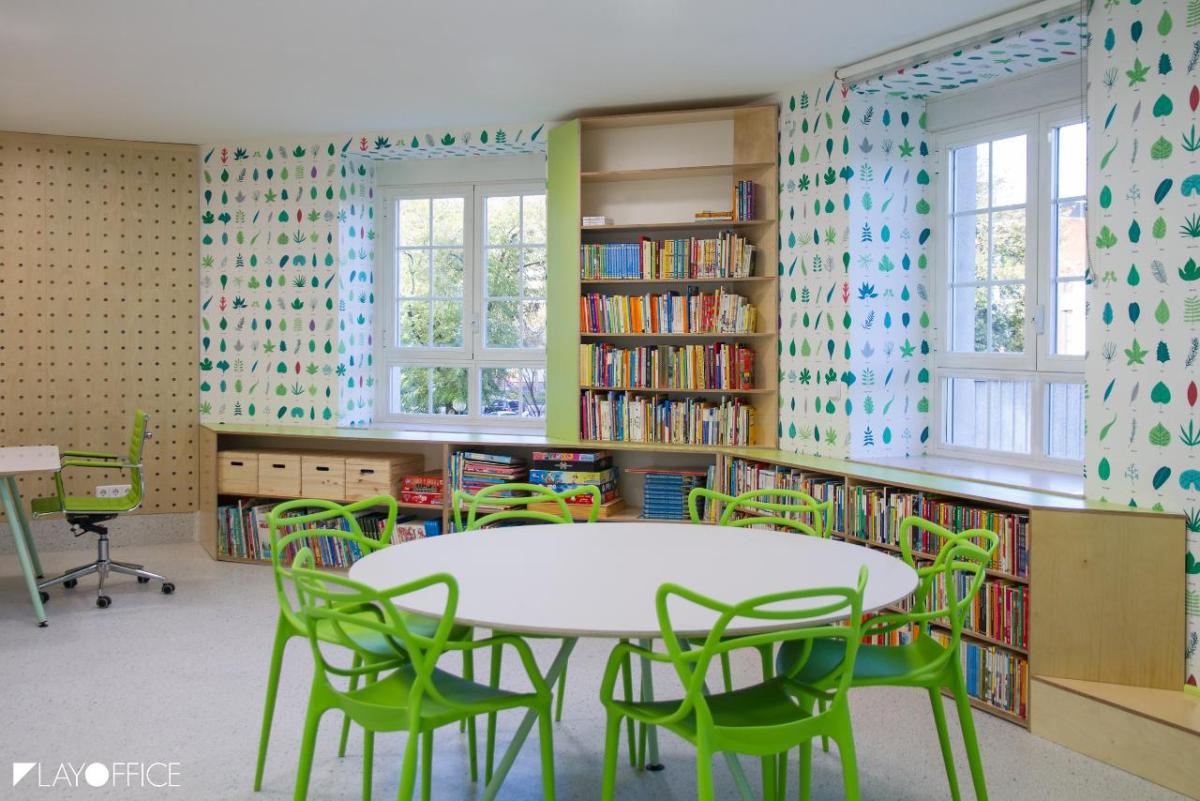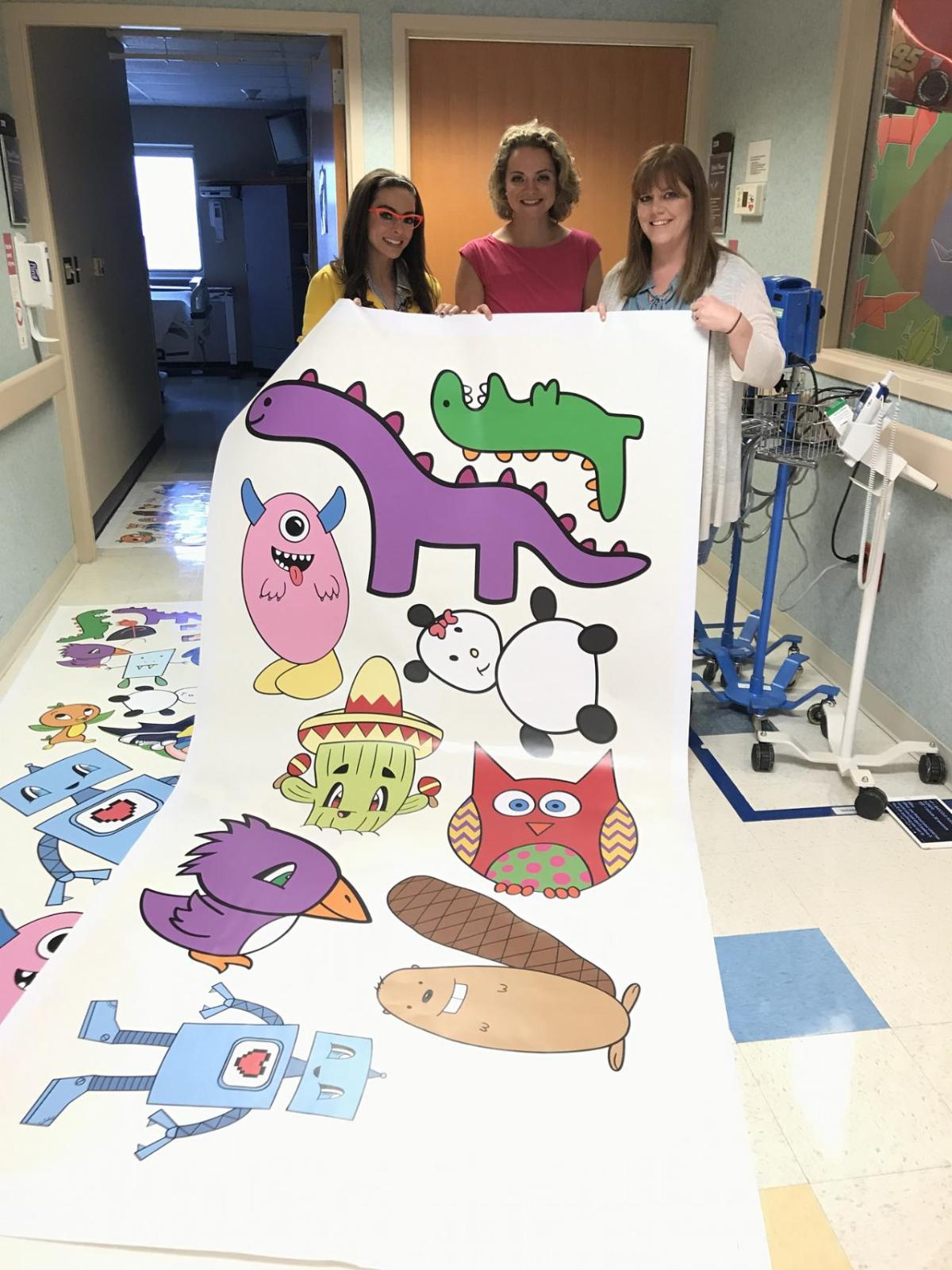At Children’s Hospitals, Graphic Prints Do More Than Decorate Rooms
HP Latex prints are transforming sterile medical environments into magical spaces designed to help kids heal.
HP | The Garage: Arts & Design
At Nino Jesus University Hospital in Madrid, Spain, brightly colored butterflies and busy birds cover the ceilings of the pediatric cancer treatment center. Fish and ducks, playfully illustrated in festive hues, patrol a pond that winds down a hallway.
How did nature make its way into an environment that can often be severe and frightening? HP partnered with the nonprofit Fundación Juegaterapia, which is dedicated to transforming the experience of hospital stays for children, to revamp the treatment center using HP’s unparalleled graphic printing technology.
“When the children get into this newly decorated space, they smile,” says Lourdes Amayas, press chief for Fundación Juegaterapia. “Before that, they couldn’t imagine that a hospital would be like this.”
The Nino Jesus makeover is just the latest in a series of projects HP is rolling out in hospitals in the United States and Europe. Using HP’s graphic illustrations on furniture, walls, floors and ceilings, the partners are creating warm, uplifting, health-promoting environments for children who must undergo difficult medical treatments or stay in a hospital for months at a time.
Less stress = less sedation
In Spain, where HP started working with hospitals three years ago, transforming first Sant Joan de Deu Hospital in Barcelona and then Hospital de Leon, the makeovers have been accompanied by better medical results.
At Sant Joan de Deu Hospital, the partners transformed the diagnostic and MRI area into a “space odyssey,” with the MRI machine decorated to look like a rocket. From the moment the young patients arrive, they’re treated as though they’re astronauts — the heroes of a great space mission. Distracted by this imaginative play, the children become less frightened, which has cut sedation rates by 30 percent.
“We’ve been able to inspire these hospitals with the power of technology — and they've been so open to changing these environments because they also get the impact,” says Oscar Vidal, head of HP’s Large Format Business Iberia, who spearheaded the project.
Buoyed by the success of the pediatric center’s redesign, Nino Jesus, HP and Fundación Juegaterapia are now working on plans for the hospital’s main entrance, its surgical block and its oncology-hospitalization area.
Giraffes, robots and dinosaurs
In the U.S., HP is working with the Batcole Foundation, a nonprofit that raises funds for research into new therapies for neuroblastoma and other pediatric cancers, to redesign hospitals so that young patients are surrounded with as much joyful creativity as possible.
Carol and Mike Winnefeld founded Batcole in 2015 after their son, Cole, passed away at age 11 following a six-and-a-half-year fight against cancer. Katie Linendoll, an Emmy Award-winning tech expert who had been a volunteer at the New York hospital where Cole was treated and became close friends with him, brought HP and Batcole together. After making over the hospital near Cole’s hometown in Indiana, the partners plan to redecorate hospitals nationwide, starting with Pittsburgh, Boston and Orlando.
One of the first hospital areas HP and Batcole tackled was the room where Cole had spent so much time. HP and the Foundation splashed one wall with a montage of Cole’s drawings, including images of giraffes, robots and dinosaurs. Another treatment room’s walls are filled with brightly colored origami foxes, birds and other creatures, giving the children much-needed distractions.
“With these wall decorations, you can transform a room that’s plain and boring and unengaging in a matter of hours — making a huge difference and creating a huge motivator not only for the kids but for the staff,” says Carol Winnefeld. “We had the whole staff on the floor crying when we did Cole’s room.”
Odorless and versatile
These make-believe worlds are made possible by HP Latex technology. Developed by HP’s R&D lab in Barcelona, HP Latex inks produce prints that are odorless and release extremely low levels of volatile organic compounds, making them ideal for sensitive environments such as hospitals.
For instance, when HP began talking to hospitals in Spain, Vidal says, doctors there questioned the suitability of installing the prints around children with compromised health. So HP ran tests to demonstrate the latex inks’ safety and lack of odor, which won the hospitals over, he says. “HP Latex is very human-friendly,” explains Vidal. “Not all technologies are able to go into a delicate environment like this.”
HP’s latex printing technology is also versatile — it can print designs on all kinds of substrates, including walls, floors, canvases and blinds. Using HP Latex, Fundación Juegaterapia and Nino Jesus administrators created a small universe full of light and color, including nooks carved into the walls where children can get away and flooring that mimics grass.
Rethinking classrooms, too
For HP, its work with hospitals provides proof of HP Latex’s potential to make a difference in childrens’ lives. Now, schools are eyeing the technology to create engaging, interactive classroom environments, says Vidal.
The effort has delivered all that Vidal envisioned three years ago and more. “When you see how the same technology you work with day to day can make a kid smile or make them less scared,” he says, “that touches you in a very personal way.”
See how HP Latex printing technology turns hospitals into friendlier places.



